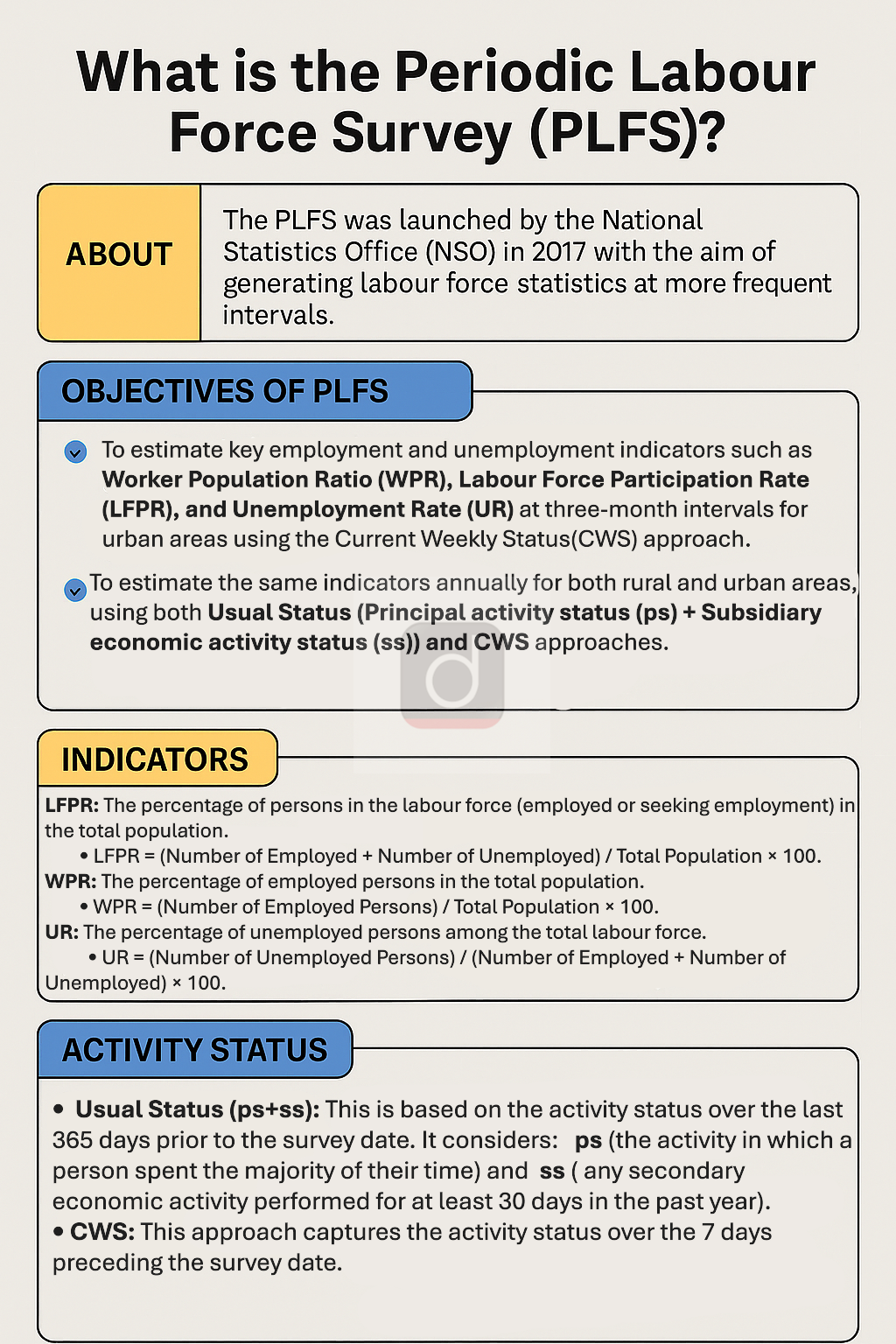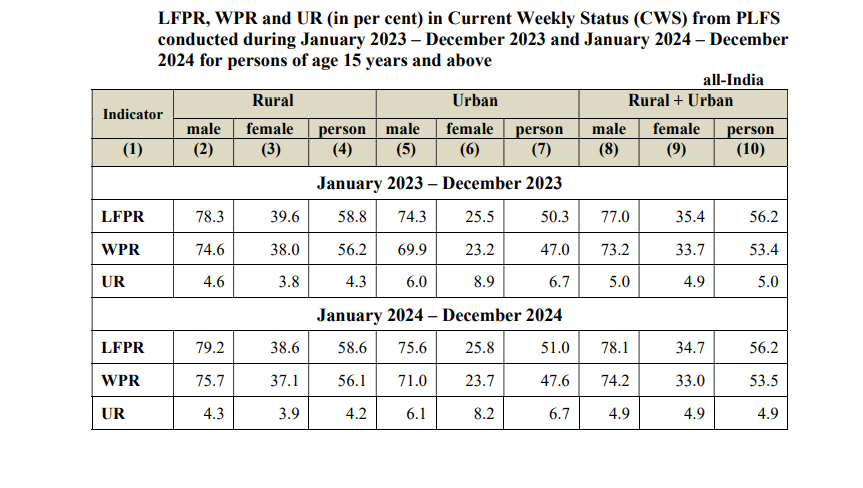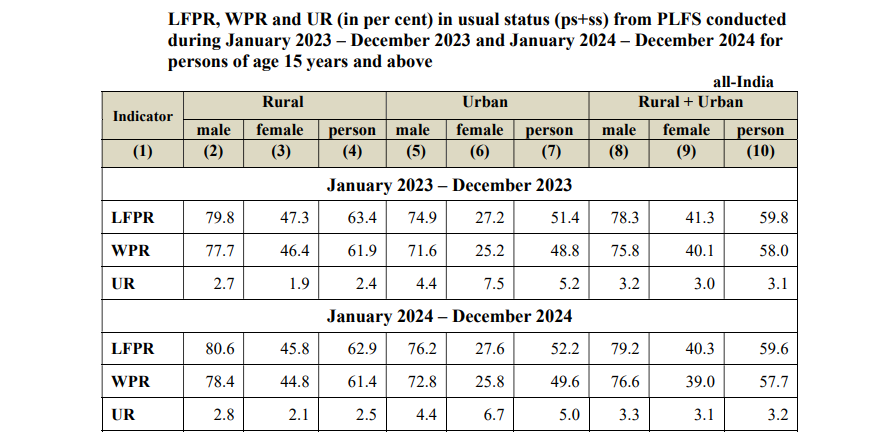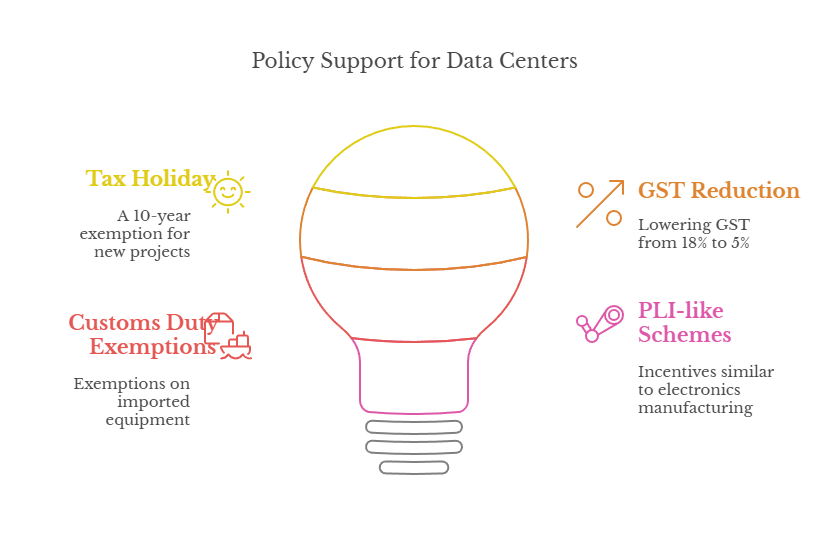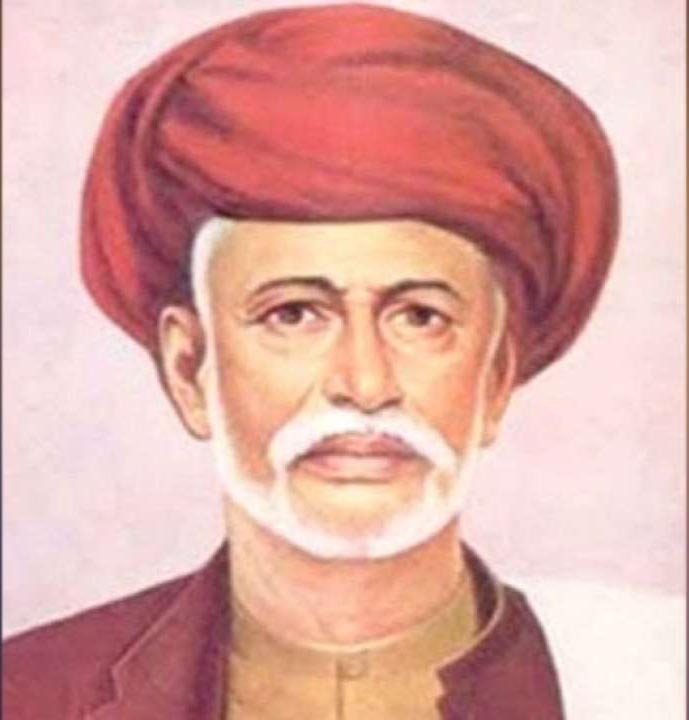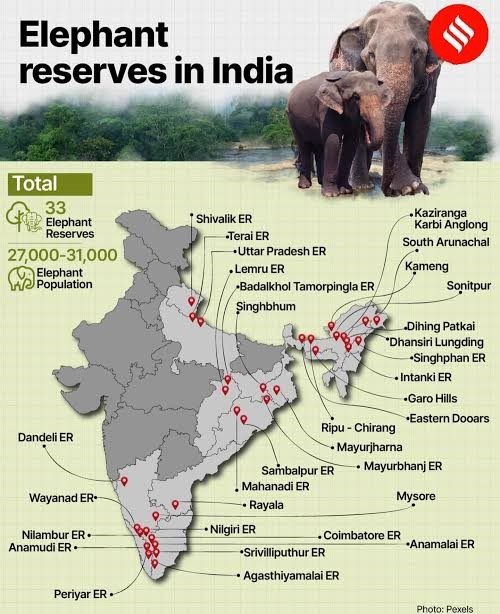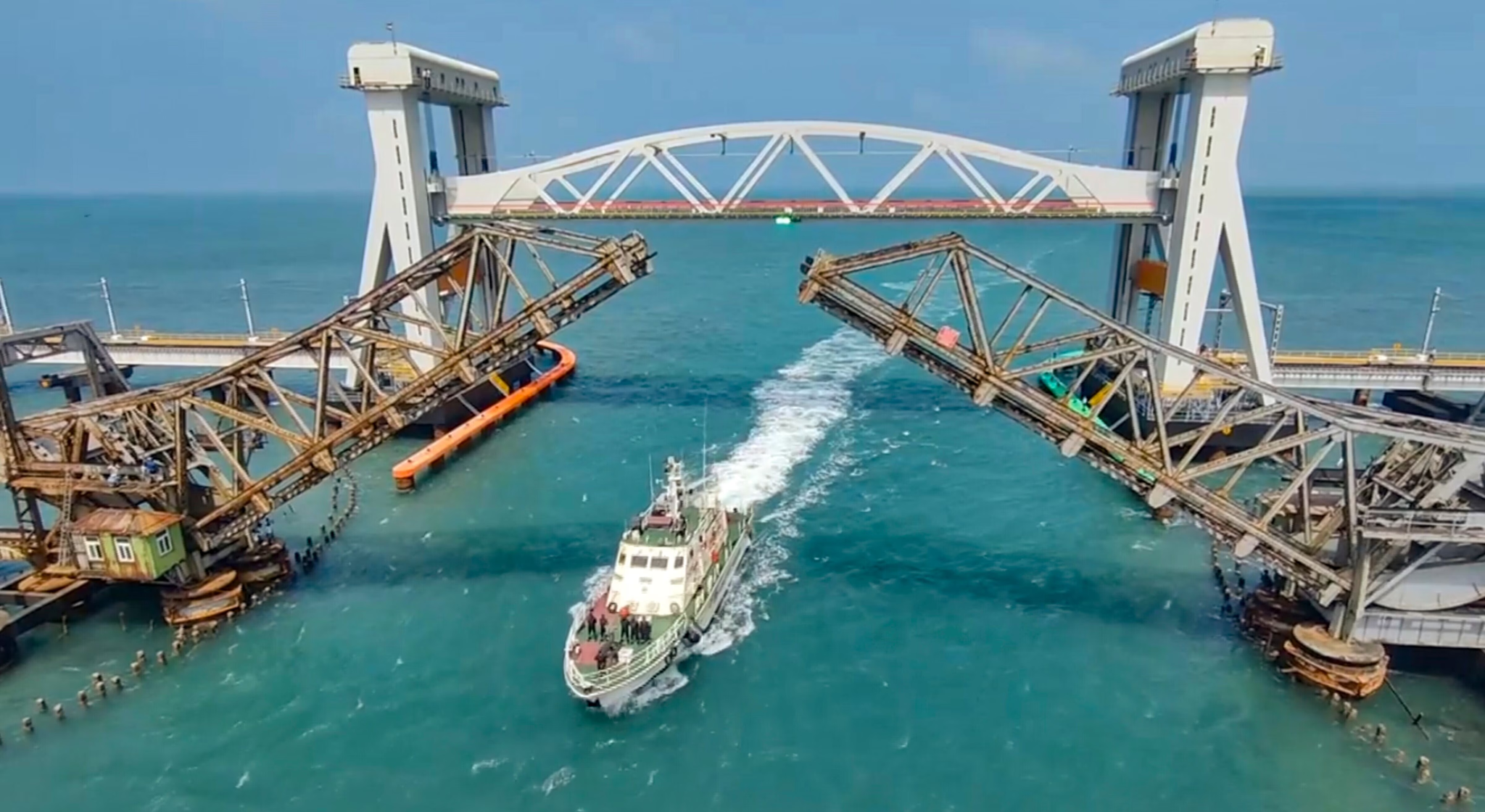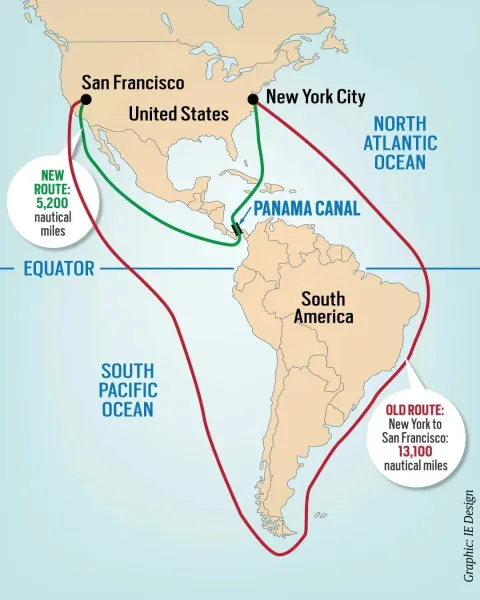Indian Economy
Periodic Labour Force Survey 2024
For Prelims: Periodic Labour Force Survey, International Labour Organization, SMILE, Rozgar Mela, Future Skills Prime
For Mains: Labour reforms and employment trends in India, Urban vs rural employment dynamics, Gender disparities in India’s labour force
Why in News?
The Ministry of Statistics and Programme Implementation (MoSPI) released the Periodic Labour Force Survey (PLFS) 2024. This data provides crucial insights into India’s evolving labour market dynamics across both rural and urban sectors.
What are the Key Findings of the PLFS 2024?
- Labour Force Indicators in Current Weekly Status(CWS):
- Labour Force Participation Rate (LFPR): Urban LFPR rose for males (74.3% to 75.6%) and slightly for females (25.5% to 25.8%), raising overall urban LFPR to 51.0%. All-India LFPR remained stable at 56.2%.
- Worker Population Ratio (WPR): Urban WPR rose slightly from 47.0% to 47.6% and all-India WPR was nearly unchanged at 53.5%.
- Unemployment Rate (UR): Rural unemployment fell slightly to 4.2%. Urban male UR rose, female UR declined, keeping overall urban UR rate at 6.7%. All-India UR dipped from 5.0% to 4.9%.
- Labour Force Indicators in Principal and Subsidiary Status(PS+SS):
- LFPR: Remained largely stable nationally, with a slight decline from 59.8% to 59.6%.
- WPR: All-India WPR declined slightly from 58.0% to 57.7%, indicating a minor drop in employment.
- UR: All-India UR rose slightly from 3.1% to 3.2%, with trends varying across sectors.
What are the Concerns Regarding India’s Labour Force?
- Gender Gaps: Female LFPR remains much lower than male, with urban female unemployment at 8.2%. Only 3% of employed women aged over 25 years hold advanced degrees, revealing underutilization of educated women and a mismatch between skills and job opportunities.
- Stagnation in Employment: WPR and LFPR show minimal year-on-year change, indicating sluggish job creation.
- Employment growth is not proportional to economic growth, indicating jobless or low-quality job growth.
- Youth Unemployment: A large proportion of the unemployed workforce consists of youth, especially those with secondary or higher education. According to the International Labour Organization (ILO), global youth unemployment was 13.3% in 2023. In contrast, India’s youth unemployment rate stood at 10.2% in 2023–24.
- Low Productivity: According to the ILO, India has the 2nd-longest average workweek globally at 46.7 hours, with 51% working over 49 hours, just behind Bhutan.
- Despite this, India's labour productivity remains low, with a Gross Domestic Product (GDP) per working hour of just USD 8, placing it 133rd globally as of 2023.
- Rural Employment Dependence: A large portion of the rural workforce remains engaged in low-productivity or subsistence work, raising concerns about underemployment and the prevalence of informal, insecure jobs over quality, skill-intensive employment.
What are India's Initiatives Related to Employment?
- Support for Marginalised Individuals for Livelihood and Enterprise (SMILE)
- PM-DAKSH (Pradhan Mantri Dakshta Aur Kushalta Sampann Hitgrahi)
- Mahatma Gandhi National Rural Employment Guarantee Act (MGNREGA)
- Pradhan Mantri Kaushal Vikas Yojana (PMKVY)
- Start Up India Scheme
- Rozgar Mela
- Indira Gandhi Urban Employment Guarantee Scheme- Rajasthan.
What Can Be Done to Improve India’s Labour Force?
- Bridge the Skill-Industry Mismatch: Promote outcome-based skilling through National Skill Development Corporation (NSDC) partnerships with private players.
- Integrate the Future Skills Prime ecosystem to equip youth with Industry 4.0 skills like Artificial Intelligence, data analytics, and cybersecurity.
- Drive Formalization with Inclusivity: Institutionalize ‘one-nation, one-registration’ for unorganized workers using e-Shram, Aadhaar and Unified Payments Interface (UPI) synergy.
- Facilitate micro-credit access and digital onboarding of MSMEs through schemes like PM Vishwakarma and Udyam Portal.
- Institutionalize Urban Employment and Mobility: Scale urban wage employment models based on Kerala’s Ayyankali Urban Employment Scheme (guarantee 100 days of wage employment per year to urban households with adults willing to do unskilled manual work).
- Create labour mobility corridors with housing, and insurance support for interstate migrant workers.
- Leverage Climate Transition for Job Creation: Channel investments into green sectors (solar, EVs, waste-to-energy) to generate employment with environmental dividends.
- Embed just transition principles to reskill workers from high-carbon sectors.
- Design Gendered Labour Reforms: States should pilot Women Workforce Participation Indices to map district-level constraints (e.g., transport, care work, patriarchal norms) and design targeted interventions.
- Link Corporate Social Responsibility spending mandates with support for women's skilling, mentoring, and return-to-work programs.
- Incentivize Employers: Offer Employment-Linked Incentive Schemes (ELI) where tax relief is proportionate to new formal jobs created.
- Provide fiscal benefits for companies adopting inclusive hiring practices (women, PwDs, elderly, and transgender persons).
|
Drishti Mains Question: Despite high economic growth, India continues to face challenges of jobless growth and youth unemployment. Discuss |
UPSC Civil Services Examination, Previous Year Questions (PYQs)
Prelims
Q. Increase in absolute and per capita real GNP do not connote a higher level of economic development, if(2018)
(a) industrial output fails to keep pace with agricultural output.
(b) agricultural output fails to keep pace with industrial output.
(c) poverty and unemployment increase.
(d) imports grow faster than exports.
Ans: (c)
Q. Disguised unemployment generally means (2013)
(a) large number of people remain unemployed
(b) alternative employment is not available
(c) marginal productivity of labour is zero
(d) productivity of workers is low
Ans: (c)
Mains
Q. Most of the unemployment in India is structural in nature. Examine the methodology adopted to compute unemployment in the country and suggest improvements. (2023)
Q.“Success of ‘Make in India’ program depends on the success of ‘Skill India’ programme and radical labour reforms.” Discuss with logical arguments. (2015)
Q. “While we flaunt India’s demographic dividend, we ignore the dropping rates of employability.” What are we missing while doing so? Where will the jobs that India desperately needs come from? Explain. (2014)

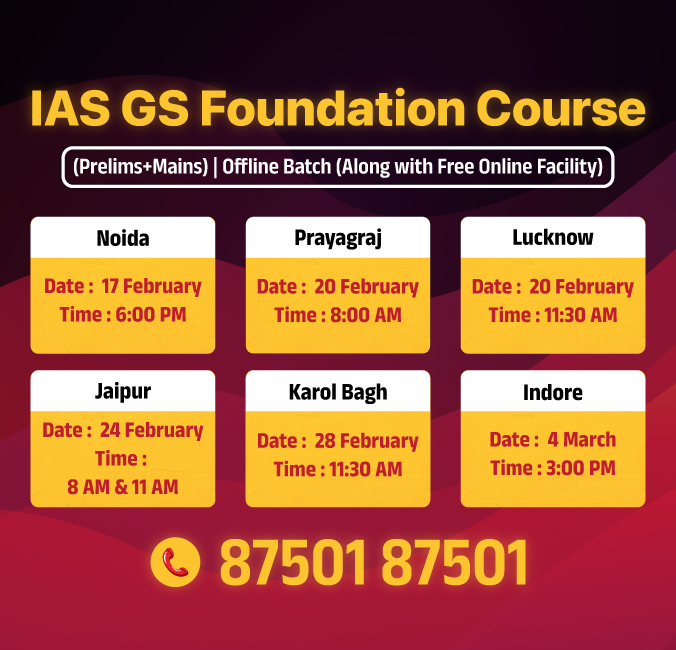
Science & Technology
Need for Local Data Centres
For Prelims: Digital Data, Data Centre, GDPR, DPDP Act, 2023, E-commerce, Fintech, Cloud Computing, IoT, Generative AI, 5G, Cybersecurity.
For Mains: Need for local data centres, opportunities and challenges in setting up local data centers.
Why in News?
India contributes around 20% of the world’s digital data but holds less than 2% of global data centre capacity in India, highlighting a major infrastructure gap to fully utilise available data.
- Underutilizing available data goes against the idea that "data is the new oil," which highlights its growing importance in today’s economy.
What are Data Centers?
- About: A data center is a physical facility that organizations use to house their critical applications and data.
- Its key components include routers, switches, firewalls, storage systems, servers, and application-delivery controllers.
- Types:
- Enterprise (On-Premises): Owned & managed by a single company for full control (e.g., banks, healthcare for compliance).
- Public Cloud (Hyperscale): Run by cloud service providers (CSPs) (e.g., Azure, IBM Cloud) for shared, scalable resources.
- Colocation Facilities: Companies rent space but own their hardware; providers manage power/cooling.
- Edge Data Centers: Smaller, decentralized facilities closer to users to reduce latency (critical for AI, IoT).
- Core Components:
- Network Infrastructure: This connects servers (physical and virtualized), data center services, storage, and external connectivity to end-user locations.
- Storage Infrastructure: Storage systems are used to hold data that acts as fuels of the data center.
- Computing Resources: It provides the processing, memory, local storage, and network connectivity that drive applications.
- Key Benefits:
Why is Data Called the New Oil?
- Fuel for Modern Economy: Like oil in the 20th century, data now powers modern business, with firms like Google, Amazon, and Foursquare built on user data.
- Businesses turn data into value by predicting trends, improving operations, and personalizing services like refining oil into high-value products.
- Data as Strategic Resource: Nations now treat data as a geopolitical resource, regulating its flow (e.g., GDPR, India’s DPDP Act, 2023).
- Foundation of Digital Economy: Powers e-commerce, fintech, cloud computing, and IoT (smart devices, connected cars).
Why Are Local Data Centres Crucial for India?
- India's Digital Footprint: India tops global digital data generation, with the highest number of users on Facebook (450 million), WhatsApp (540M), YouTube (490M), and Instagram (360M) requiring facilities to their data locally.
- Economic Growth: India could attract USD 400 billion in investments by expanding data centres to match its data growth target of 40 GW by 2030.
- It can boost e-commerce, fintech, AI, and cloud computing, key sectors for achieving India’s USD 5 trillion economy goal.
- Job Creation: Data centers can create 1–2 million direct jobs and 3 times more indirect jobs in construction, logistics, and tech services.
- Data Sovereignty: Local data centres ensure sensitive data (financial, health, citizen records) stays within India, complying with the Digital Personal Data Protection Act, 2023.
- Prevents external control over critical data flows, enhancing national security.
- AI & Digital Leadership: Generative AI could add USD 2.6–4.4 trillion/year globally.
- Companies like AWS, Google, and Microsoft are growing their data centers in India positioning the country as a future AI hub.
- Competitive Advantage: While nations like China (rare earth minerals), Australia (iron ore), and Chile (copper) leverage their natural strengths, India generates 20% of global data yet holds less than 2% of the world’s data centre capacity.
- Local data centers can provide global data processing and cloud services, similar to India’s IT services success.
- Infrastructure Boost: India’s data center growth will create demand for 800 million sq ft of construction, boosting real estate, renewable energy, and telecom infrastructure.
What is the Current Status of Data Centres in India?Click Here to Read: Current Status of Data Centres in India What are the Key Reasons for Growth of Data Centres in India?Click Here to Read: Reasons for Growth of Data Centres in India |
What are Key Concerns Related to Local Data Centers in India?
- High Capital Investment: Building 40 GW of data center capacity by 2030 needs USD 400 billion, but long payback periods of 10–15 years may deter private investment.
- Trade & Economic Risks:
- Reciprocal Trade Barriers: If India forces foreign firms to store data locally, other countries may impose similar restrictions on Indian IT firms (e.g., TCS, Infosys).
- Higher Costs for Consumers: Compliance costs may lead to increased prices for cloud services, streaming, and digital products.
- Reduced Competition: Smaller tech firms may exit India due to compliance burdens, leaving only giants (Google, AWS) with resources to adapt.
- WTO & Legal Disputes: Could be seen as a protectionist policy, inviting trade complaints.
- Operational Challenges:
- Unreliable Power Supply: Frequent power outages require expensive backup systems (diesel generators, batteries).
- Cooling Requirements: India’s hot climate increases energy needs for cooling, raising costs.
- Limited Undersea Cables: Most international data flows via foreign-owned cables (e.g., controlled by US/China), creating dependency.
- Sustainability Concerns:
- Energy-Intensive: Data centres used 1.5% of global electricity in 2024 and may reach 3% by 2030. India’s coal-dependent grid raises carbon footprint concerns.
- Water Usage for Cooling: It conflicts with agricultural and drinking water needs in drought-prone regions.
- Cyber Risks: Large data centers become high-value targets for cyberattacks or physical sabotage.
How India Can Promote Data Center Growth?
- Policy Support: Support measures for data centers could include:
- Flexibility in Data Localization: Encourage, not mandate, localization via incentives (e.g., tax breaks for firms storing data in India).
- Infrastructure Development: Provide subsidized electricity tariffs (like China’s ultra-low rates) and allow direct power procurement from DISCOMs or renewable sources such as solar and wind.
- Mandate green data centers with incentives for liquid cooling & energy-efficient designs.
- Connectivity & Fiber Networks: Expand undersea cable stations, build a National Fiber Corridor, and develop 5G-ready infrastructure for edge data centers.
- Land & Real Estate: Set up dedicated data center zones in cooler cities (Shimla, Dehradun, Chandigarh) to reduce cooling costs and use PPP models for land allocation near industrial hubs.
- Skill Development & R&D: Promote skill development and innovation through a National Data Center Academy for training in AI, cloud, and cybersecurity, along with R&D grants for indigenous server and cooling technologies.
Conclusion
Despite contributing 20% of global digital data, India lacks adequate data center capacity, limiting its digital potential. Bridging this gap is essential for economic growth, job creation, data sovereignty, and global AI leadership. Strategic investments, policy support, and sustainable infrastructure are critical for realizing India’s digital aspirations.
|
Drishti Mains Question: Discuss how data centre development in India can contribute to achieving the USD 5 trillion economy target. |
UPSC Civil Services Examination, Previous Year Questions (PYQs)
Prelims
Q. With the present state of development, Artificial Intelligence can effectively do which of the following? (2020)
- Bring down electricity consumption in industrial units
- Create meaningful short stories and songs
- Disease diagnosis
- Text-to-Speech Conversion
- Wireless transmission of electrical energy
Select the correct answer using the code given below:
(a) 1, 2, 3 and 5 only
(b) 1, 3 and 4 only
(c) 2, 4 and 5 only
(d) 1, 2, 3, 4 and 5
Ans: (b)


Important Facts For Prelims
Jyotiba Phule
Why in News?
The birth anniversary of Jyotiba Phule was observed on 11th April, the great social reformer, philosopher and writer.
What are the Key Facts about Jyotiba Phule?
- About: He was born on 11th April, 1827, and emerged as a pioneering social reformer who challenged Brahmanical orthodoxy, fought for the rights of Dalits and women, and laid the foundation for India’s social justice movements.
- Key Contributions:
- Educational Reforms: Phule and his wife Savitribai opened India’s first girls’ school in 1848 and later started night schools (1855) for workers, farmers, and women in Pune.
- Social Reforms:
- Opposed Orthodoxy: Phule opposed caste oppression, criticized Brahminical figures like Chiplunkar and Tilak, and supported the British to uplift the oppressed and women.
- Anti-Caste Movement: Phule founded Satyashodhak Samaj (1873) to fight caste hierarchy and, in Gulamgiri, compared caste oppression to American slavery.
- Deenbandhu, a Marathi weekly newspaper founded by Krishnarao Pandurang Bhalekar in 1877, served as an outlet for Satyashodhak Samaj.
- 1857 Revolt Critique: Viewed it as an upper-caste effort to restore Brahmin rule.
- Economic Reforms: Advocated compulsory education for lower castes and economic upliftment to dismantle caste hierarchies.
- Religious Freedom: In his Satsar (The Essence of Truth), Phule defended the right of Pandita Ramabai to convert to Christianity.
- Farming Reforms: In Shetkaryanche Asud (Farmer’s Whip), Jyotirao Phule critiqued the exploitation of Shudra peasantry by a British and Brahmin bureaucratic alliance.
- Rationalism: In Sarvajanik Satya Dharma Pustak, he advocated for a just and equitable society where God is seen as a loving and rational creator. It dismantled traditional hierarchies.
- Major Publications: Tritiya Ratna (1855), Powada: Chatrapati Shivajiraje Bhosle Yancha (1869), Gulamgiri (1873), Shetkarayacha Aasud (1881).
- Inspiration: He was influenced by Thomas Paine’s The Rights of Man, and saw education of women and lower castes as key to ending social evils.
- Recognition: He was bestowed with the title of Mahatma on 11th May, 1888 by a Maharashtrian social activist Vithalrao Krishnaji Vandekar.
UPSC Civil Services Examination, Previous Year Questions (PYQs)
Q. Satya Shodhak Samaj organized (2016)
(a) a movement for upliftment of tribals in Bihar
(b) a temple-entry movement in Gujarat
(c) an anti-caste movement in Maharashtra
(d) a peasant movement in Punjab
Ans: (c)


Important Facts For Prelims
Elephant Poaching in Tamil Nadu
Why in News?
A recent elephant poaching incident in Tamil Nadu has reignited concerns about the re-emergence of wildlife crime as an existential threat to the survival of wild elephants.
- As per the Ministry of Environment, Forest and Climate Change (MoEFCC), the elephant population dropped from over 4,000 (2012) to <2,800 (2017) but recovered to 3,000+ (2024).
What are the Key Facts About Elephants?
- About:
- Elephant is a National Heritage animal of India.
- They are matriarchal, living in groups led by females.
- They are considered "Keystone Species" for playing a critical role in maintaining the balance and health of forest ecosystems.
- As ecosystem engineers, elephants facilitate seed dispersal and create access to water sources for other species.
- Species:
- Asian Elephants (Elephas maximus)
- African Elephants:
- African Savannah Elephants (Loxodonta africana)
- African Forest Elephants (Loxodonta cyclotis)
- Population in India:
- Indian elephants are a subspecies of Asian elephants native to the Indian subcontinent that represent around 60% of all Asian elephants.
- According to the elephant census conducted in 2017, India is home to approximately 29,964 elephants.
- Karnataka had the highest number of elephants followed by Assam and Kerala.
- In terms of protected areas, Sathyamangalam forest division has the highest number of elephants.
- Threats:
- Ivory trade, human-animal conflict, inter-state and transnational wildlife trafficking, etc.
- Conservation Status:
- Convention of the Migratory Species (CMS): Appendix I
- Wildlife (Protection) Act, 1972: Schedule I
- Related Initiatives:
- India:
- Project Elephant: Launched in 1992 to safeguard elephants and their natural habitat in India.
- Elephant Reserves & Corridors: There are 33 elephant reserves and 150 elephant corridors in the country.
- Project RE-HAB: Aims to prevent elephant-human conflicts by installing bee-fences, thereby minimising both conflicts and retaliatory killings.
- Global:
- World Elephant Day: It is observed annually on 12th August to raise awareness about the urgent need to protect and conserve elephants.
- Monitoring of Illegal Killing of Elephants (MIKE) Programme: It is an international initiative that tracks elephant mortality trends to support conservation efforts in Asia and Africa.
- India:
Difference Between Asian and African Elephants:
|
Feature |
Asian Elephant |
African Elephant |
|
Geographical Range |
|
|
|
Size |
|
|
|
Tusks |
|
|
|
Trunk |
|
|
|
Skin Texture |
|
|
|
Conservation Status (IUCN) |
|
|
Note: Elephant Reserves lack legal protection unless they fall within existing Reserve Forests or Protected Areas.
UPSC Civil Services Examination Previous Year Question (PYQ)
Q. With reference to Indian elephants, consider the following statements: (2020)
- The leader of an elephant group is a female.
- The maximum gestation period can be 22 months.
- An elephant can normally go on calving till the age of 40 years only.
- Among the States in In
- dia, the highest elephant population is in Kerala.
Which of the statements given above is/are correct?
(a) 1 and 2 only
(b) 2 and 4 only
(c) 3 only
(d) 1, 3 and 4 only
Ans: (a)


Rapid Fire
New Pamban Bridge
The Prime Minister inaugurated India’s first vertical lift railway sea bridge, the new Pamban Bridge, enhancing connectivity between Rameswaram and mainland India.
- It is designed by Rail Vikas Nigam Limited (RVNL) under the Ministry of Railways, and is built to last over 100 years.
- It spans 2.07 km across the Palk Strait, replacing the 1914 Pamban Bridge which was a cantilever structure with a Scherzer Rolling Lift span.
- It features a 72.5-meter vertical lift span that rises 17 meters to allow ship passage.
- Designed for double tracks, it supports heavier, faster trains and smooth rail-maritime coordination.
- It joins globally recognized bridges like the Golden Gate (USA), Tower (UK), and Oresund (connect Denmark and Sweden) bridges.
- It has been built to withstand turbulent waters, cyclones, and seismic activity.
- During the 1964 tsunami, a passenger train was swept away from the old Pamban Bridge, although the bridge itself withstood the disaster.
- The construction of the old Pamban Bridge started in 1911 and was opened to traffic in 1914. It was India’s first sea bridge, built for trade.
| Read more: Katchatheevu Island |


Rapid Fire
Olive Ridley Turtles in India
A study has revealed that Olive Ridley turtles in the Indian Ocean are among the oldest in the world.
- Key Findings: Indian Ocean Olive Ridleys have survived past climate shifts, with the Atlantic and Pacific populations diverging from them around 300,000 - 400,000 years ago.
- This contradicts earlier belief that Central American turtles were the oldest due to Isthmus of Panama's formation.
- Olive Ridley (Lepidochelys olivacea): It belongs to the class Reptilia and family Cheloniidae, is the smallest sea turtle species, recognized by its olive or grayish-green color and heart-shaped carapace.
- Olive Ridleys are omnivores and exhibit arribada, a mass nesting event where thousands of females nest together.
- They migrate 9,000 km from the Pacific to Indian seas, nesting 1–3 times between December and March, and laying about 100 eggs per clutch.
- Major Nesting Sites: Gahirmatha and Rushikulya in Odisha are among the world’s largest nesting sites for Olive Ridley turtles. In 2024, over 1.3 million turtles laid eggs at these rookeries, surpassing the previous record of 1.15 million in 2023.
- Other important nesting sites in India include the Devi River mouth in Odisha and the Andaman Islands.
- Threats: Bycatch in fishing gear, poaching, habitat loss, and plastic pollution. Climate change also disrupts nesting and food availability through rising temperatures and sea levels.
- Protection Status: Wildlife Protection Act, 1972 (Schedule 1), IUCN Red List (Vulnerable), and CITES (Appendix I)
- Olive Ridleys are omnivores and exhibit arribada, a mass nesting event where thousands of females nest together.
| Read more: Mass Nesting of Olive Ridley Turtles |


Rapid Fire
Panama Canal
The US and Panama have formalised a new defense and security pact aimed at countering China’s expanding influence over the Panama Canal.
- China operates two major ports at the Panama Canal, raising US concerns about Chinese influence on global shipping, though Panama denies any Chinese control.
- Panama Canal: The Canal was originally constructed (1914) and controlled by the US.
- In 1979, control of the Canal was transferred to the Panama Canal Commission, a joint agency of the US and Panama, and eventually, in 1999, full control was handed over to Panama.
- Strategic Importance: It is one of the two most strategically significant artificial waterways in the world, the other being the Suez Canal.
- It connects the Atlantic and Pacific Oceans through the narrow Isthmus of Panama, significantly reducing the distance between the US east and west coasts by about 8,000 nautical miles.
- Operation/Functioning: It uses a system of locks and water elevators to transport ships from one ocean to the other.
- This design is necessary as the Pacific Ocean is slightly higher (~20 cm) in elevation than the Atlantic Ocean.
- The locks operate by flooding (to raise elevation) or draining (to lower elevation) and act as water elevators to lift or lower vessels.
| Read More: Panama Canal |


Rapid Fire
Maintenance and Welfare of Parents and Senior Citizens Act, 2007
The Supreme Court dismissed a senior couple’s plea to evict their son from their property under the Maintenance and Welfare of Parents and Senior Citizens (MWPSC) Act, 2007.
- About the MWPSC Act (Senior Citizens Act): The Act empowers senior citizens (60 years and above), who are unable to maintain themselves from their income or property, to seek maintenance from their children or legal heirs.
- Children or relatives are legally obligated to support elderly parents so they can live a dignified life.
- Special tribunals and appellate tribunals have been established to hear maintenance-related cases under this Act.
- Under Section 23(1), if a senior citizen gifts or transfers property on the condition that the transferee provides basic care and amenities, the transfer can be voided if the condition is violated.
- Section 23(2) ensures the right to maintenance from an estate even if it is transferred, provided the new owner is aware of this obligation.
- DV Act vs Senior Citizens Act: The Protection of Women from Domestic Violence Act, 2005 (DV Act) grants women the right to reside in a shared household, even if they have no ownership in the property. But the Senior Citizens Act allows senior citizens to seek eviction of children or relatives from their property if they fail to maintain them or cause distress.
- The DV Act protections remain valid, and residence rights of women must be carefully weighed against the rights of senior citizens.
| Read more: Safeguarding the Rights of Elderly |



